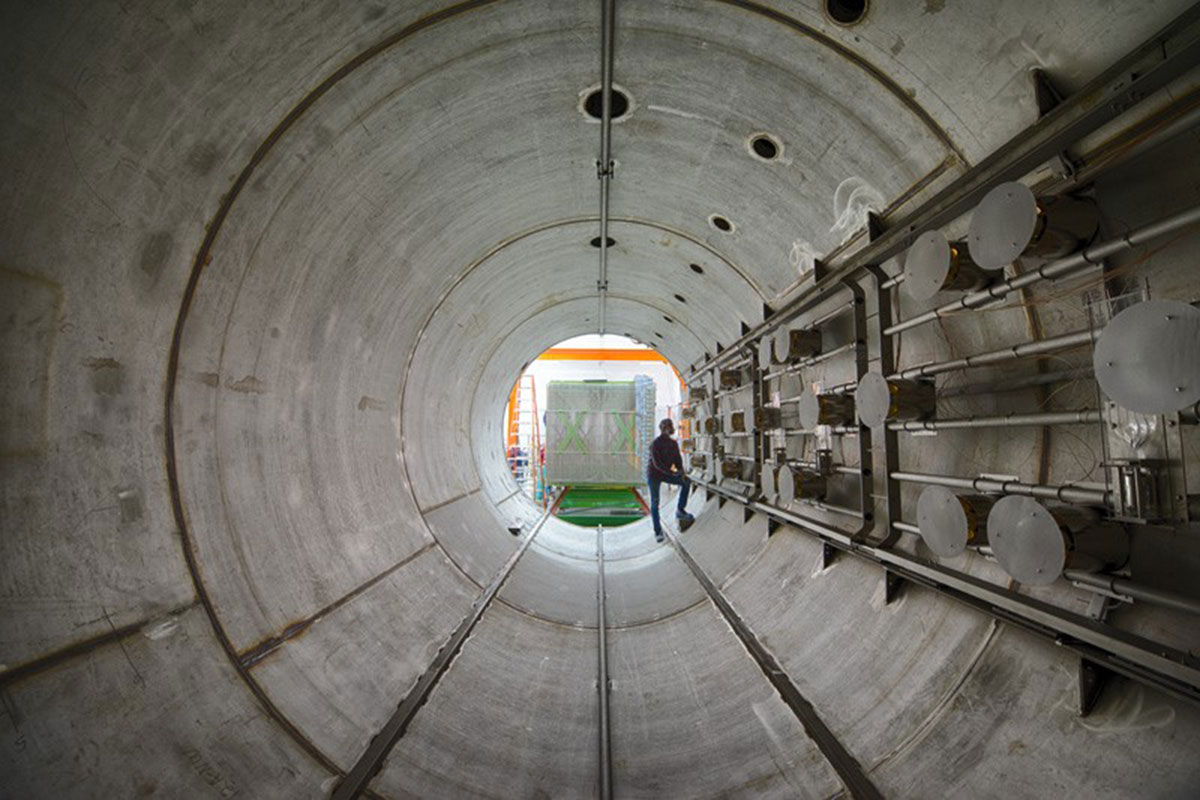Sterile neutrinos ruled out by MicroBooNE experiment

The first results from the MicroBooNE neutrino detector at Fermilab in the US suggest that the mysterious signals seen in two other neutrino detectors are not the result of hypothetical particles called sterile neutrinos. However, the new data could still point to physics beyond the Standard Model (arXiv: 2110.14054).
Neutrinos come in three known flavours – electron, muon and tau – that can change, or “oscillate”, between each other as they travel. By measuring the oscillation between different types of neutrinos and comparing it to theoretical models, physicists know that neutrinos and their antimatter counterparts are ideal candidates to search for physics beyond the Standard Model.
From 2002 to 2017 the MiniBooNE experiment at Fermilab (the predecessor to MicroBooNE) monitored how muon neutrinos created by a particle accelerator oscillate into electron neutrinos as they travelled several hundred metres. In 2018 MiniBooNE physicists reported seeing something odd in the form of far more electron neutrinos than predicted by the Standard Model.
When combined with previous measurements at the Liquid Scintillator Neutrino Detector at the Los Alamos National Laboratory in New Mexico, the excess had a statistical significance of 6.1σ, which is well above the 5σ that is normally considered a discovery in particle physics. The problem for anyone hoping for new physics was that the experiments could not discriminate between electrons and photons, which could arise from background effects. Indeed, other neutrino experiments also failed to see the same excess.
Still, one possible explanation for their findings is the existence of a fourth type of neutrino – the sterile neutrino – that can affect neutrino oscillation. The sterile neutrino is difficult to detect because it would only interact with matter via gravity meaning it could also be a potential candidate for dark matter. MicroBooNE – which began taking data at Fermilab in 2015 – can track the particles created by neutrino collisions and therefore discriminate between electrons and photons.
MicroBooNE’s first result has now ruled out electrons as the sole source of the excess at a confidence greater than 99% – seemingly ruling out the notion of sterile neutrinos. Yet given that a photon background has also been ruled out with 95% confidence as being the source of the signal, the mysterious effect could still be evidence for other new physics – or even a different type of sterile neutrino. Indeed, future analyses of MicroBooNE data could reveal evidence of dark matter, axion-like particles, or the hypothetical Z-prime boson and beyond. There is also the chance that the signal is from sterile neutrinos behaving in unexpected ways.
Hamish Johnston